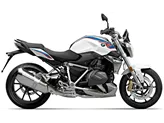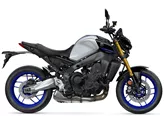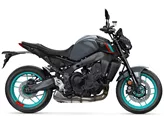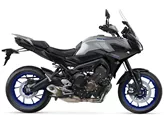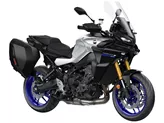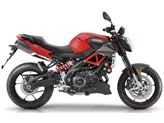BMW R 1200 R 2015 vs. Yamaha MT-09 2016

BMW R 1200 R 2015

Yamaha MT-09 2016
Overview - BMW R 1200 R 2015 vs Yamaha MT-09 2016
In terms of engine and drive train, the BMW R 1200 R 2015 is equipped with a boxer engine that produces 125 HP of power and 125 Nm of torque. On the other hand, the Yamaha MT-09 2016 features an in-line engine that delivers 115 HP of power and 87.5 Nm of torque. Both bikes have 2 and 3 cylinders respectively, with the BMW having a larger displacement of 1170 ccm compared to the Yamaha's 847 ccm.
When it comes to suspension, both bikes have telescopic forks at the front. The BMW R 1200 R 2015 has a steel frame, while the Yamaha MT-09 2016 features an aluminum frame with a twin tube design. In terms of braking, both bikes have double disk brakes at the front.
In terms of dimensions and weights, the BMW R 1200 R 2015 has a front tire width of 120 mm and a rear tire width of 180 mm, with both bikes having a 17-inch diameter for the tires. The BMW has a wheelbase of 1515 mm, while the Yamaha has a slightly shorter wheelbase of 1440 mm. The seat height of the BMW is 790 mm, while the Yamaha has a higher seat height of 815 mm. The BMW R 1200 R 2015 has a kerb weight of 231 kg, while the Yamaha MT-09 2016 is lighter at 191 kg. The fuel tank capacity of the BMW is 18 liters, while the Yamaha has a smaller fuel tank capacity of 14 liters.

BMW R 1200 R 2015
Now let's move on to the strengths of each bike. The BMW R 1200 R 2015 has a sporty look and a powerful engine that provides a good sound. It also offers a comfortable seating position and comes with ABS and traction control as standard. Additionally, it has two riding modes for added versatility.
On the other hand, the Yamaha MT-09 2016 boasts a wonderfully powerful three-cylinder powerplant. It offers three power modes, allowing riders to choose their preferred level of performance. The bike also has a fully adjustable chassis, which allows for customization according to individual preferences. Another notable feature is the quickshifter, which comes as standard and enhances the overall riding experience. The sporty upright seating position and aggressive looks add to the appeal of the Yamaha MT-09 2016. Lastly, it is equipped with traction control for added safety.

Yamaha MT-09 2016
Moving on to the weaknesses, the BMW R 1200 R 2015 has some cool features that are only available at an extra cost, which may be a downside for some buyers. Additionally, the rev counter on the bike is poorly readable, which can be inconvenient.
As for the Yamaha MT-09 2016, some riders may find the saddle a little too hard for long tours, which could affect comfort during extended rides. Another weakness is the license plate holder, which is located on the swingarm and offers less splash protection compared to a conventional one.
In conclusion, both the BMW R 1200 R 2015 and the Yamaha MT-09 2016 have their own strengths and weaknesses. The BMW offers a sporty look, powerful engine, and comfortable seating position, while the Yamaha boasts a powerful three-cylinder engine, adjustable chassis, and sporty upright seating position. Ultimately, the choice between the two will depend on individual preferences and priorities.
Technical Specifications BMW R 1200 R 2015 compared to Yamaha MT-09 2016
Pros and Cons in comparison
Pros and Cons in comparison
BMW R 1200 R 2015
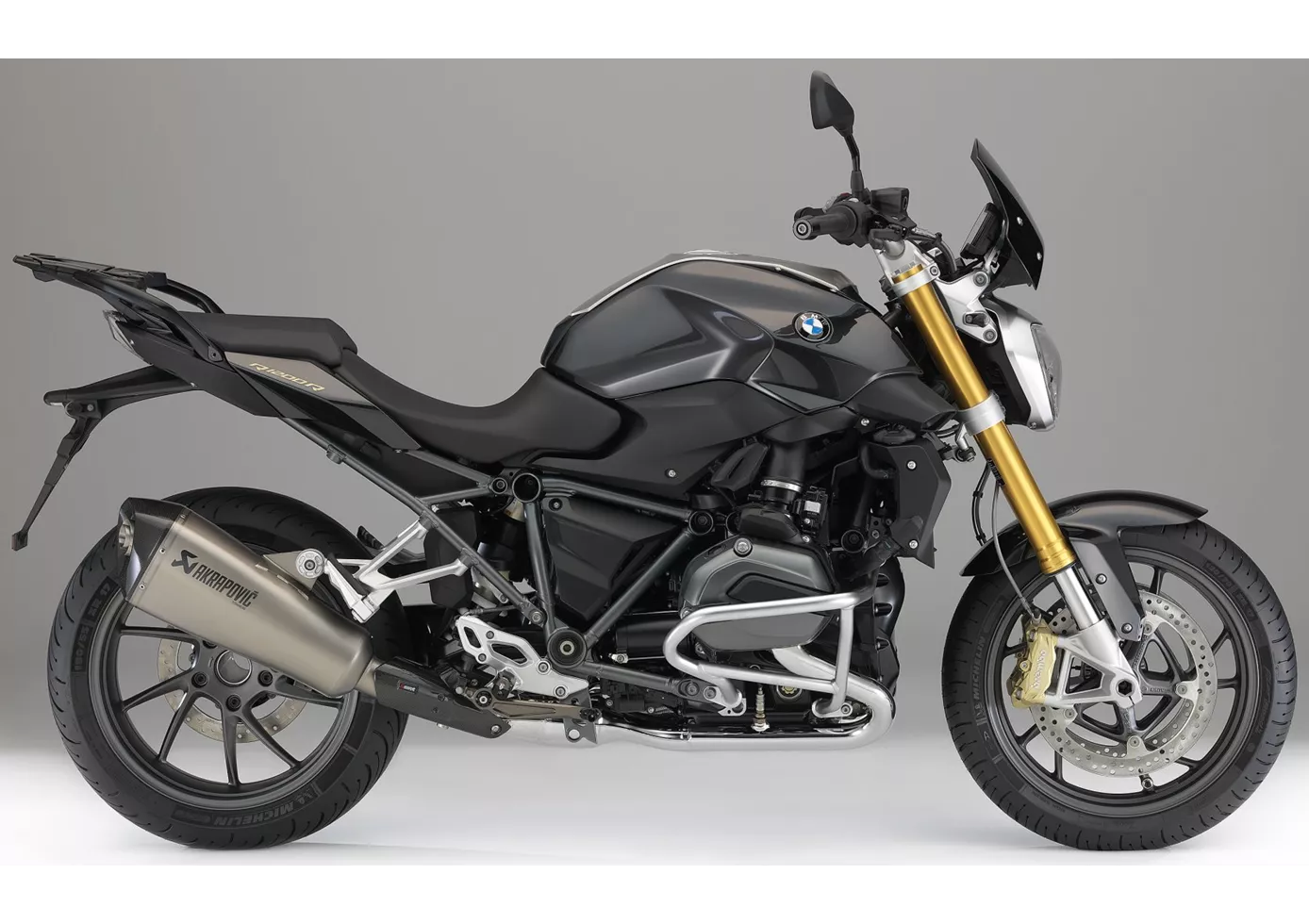
The predecessor was already able to be ridden in a sporty manner as well as convincing on tours, the new R 1200 R can do even more - thanks to the pannier system (of course at extra cost), travelling is still no problem, but it masters sport even better. Thanks to the now partially water-cooled boxer twin-cylinder engine, it is wonderfully agile - 125 hp may not seem like much on paper, but the engine pushes incredibly and behaves in a cultivated manner to boot. The chassis and brakes also score highly and the seating position is sporty and upright, covering a wide spectrum from wonderful fun to long-distance touring. Unfortunately, BMW also understands the trick with the surcharge list perfectly. The basic model is well equipped with ABS that can be deactivated, traction control that can also be deactivated and two driving modes, but many interesting gimmicks are almost obligatory - and of course drive the price way up.
Yamaha MT-09 2016

The Yamaha MT-09 did not need to be reinvented for the coming season - it already was extremely well done almost four years ago. Instead, the Japanese focus on fine-tuning and adding practical, contemporary gimmicks such as traction control and automatic shifting. Due to the Euro4 standard, however, the engine management has been changed once again and offers an emphatically powerful but well controllable power delivery in standard mode; the power explosion of the first generation is now no longer offered even by the sharper A mode. The biggest change, recognisable at first glance, is the, in my opinion, extremely successful design with the more aggressive front and the newly designed rear. All in all, an even snazzier naked bike that was clearly built for the fun of motorcycling.
Price Comparison Avarage Market Price BMW R 1200 R vs Yamaha MT-09
There are a few key differences between a BMW R 1200 R 2015 and a Yamaha MT-09 2016. In terms of price, the actual average price of a BMW R 1200 R 2015 is about 41% higher. A BMW R 1200 R 2015 experiences a loss of 990 GBP in one year and 630 GBP in two years of ownership. This is offset by a loss of 430 GBP and 730 GBP for a Yamaha MT-09 2016. Compared to Yamaha MT-09 2016 there are more BMW R 1200 R 2015 bikes available on the 1000PS.de Marketplace, specifically 23 compared to 11. It takes less time to sell a BMW R 1200 R with 69 days compared to 87 days for a Yamaha MT-09. Since model year 2007 1000PS.de editors have written 27 reviews for the BMW R 1200 R and 57 reviews for the Yamaha MT-09 since model year 2013. The first review for the BMW R 1200 R was published on 07/07/2006 and now has more than 14,900 views. This compares to more than 39,900 views for the first review on Yamaha MT-09 published on 10/06/2013.




